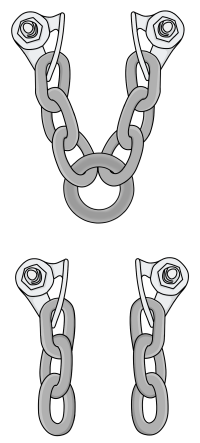These articles about sport climbing anchors are part of the book - Sport Climbing Basics.

Many climbs have bolted 'sport anchors' at the top. This is the standard for sport climbs worldwide, but is also common at many North American trad climbing venues.
These bolted anchors will usually be equipped with mallions (quick links) or lowering rings, sometimes connected with chains. You won’t be able to simply clip your rope through this type of anchor like you would at the gym. Instead, you’ll need untie from the rope and thread it through. After that, you can either abseil, or have your partner lower you down.
It’s important to learn how to do this in the correct order. If you thread an anchor incorrectly, you could drop your rope and be ‘stranded’ at the anchor, or even become completely detached from the bolts.

Sport Anchors: Lower, Abseil or Walk Off?
There are basically three ways to descend; walk off, lower or abseil (rappel). You will either lower or abseil to get down from most sport routes. Your choice largely depends on the type of anchor, how it is positioned and what you plan to do after the climb.
Lowering from a sport anchor is quicker than abseiling. It’s also much easier to retrieve gear on your way down when lowering. However, abseiling puts much less wear on the rings and your rope. This could be the best option if the rings are already showing signs of wear.
If the next climber is going to top-rope the route, you should make an anchor from your own gear and lower down from that.
If you are the last person to climb the route, you’ll need to clean all your gear from the anchor before you descend.
For anchors which are in a poor position for lowering or abseiling (e.g: far back across a ledge), it is much better to belay your partner from the top of the climb. You can then walk off.
Each of these scenarios requires a different anchor setup. These are described in the following articles.




